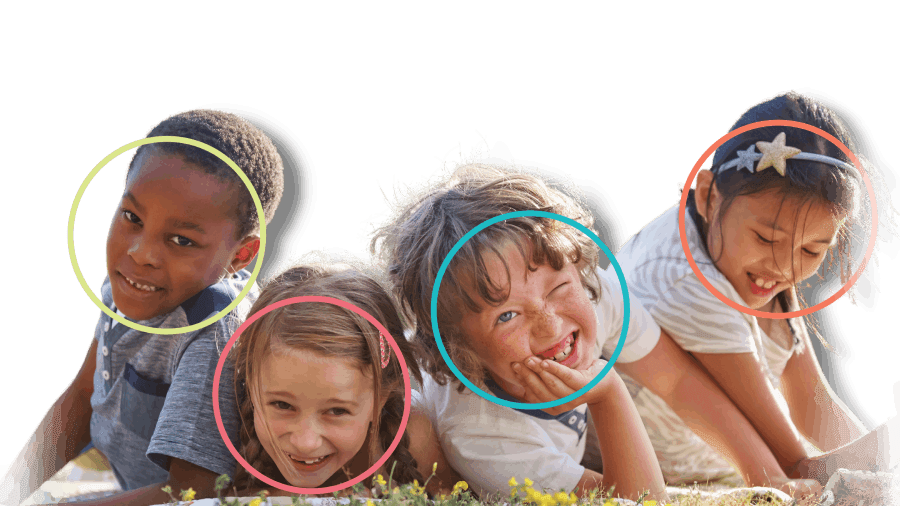As we at KIDTHINK pause to reflect on the recent increased awareness of the discrimination that exists towards people of colour, we also remember that June is Pride Month and June 21 is National Indigenous People’s Day in Canada. There are a number of groups of people that have experienced real, difficult and traumatic acts of discrimination and oppression in our country. As we approach Canada Day on July 1, we acknowledge that our country was built on the processes of colonization and residential schools and that we are still seeing the real effects of that today.
As parents, while it can feel natural to try to shield our children from the difficulties in the world, past and present, it is quite important that we talk to them about what they are hearing and seeing in the news and from other sources. This includes issues around racism and the oppression of others in its many forms. This can feel complicated to do. We may want to protect them from difficult emotions and we may not feel we have all the answers.
However, it is through having these difficult conversations that we teach our children how to think critically, how to talk about difficult topics and work through difficult feelings and how to be empathic towards others. Through these conversations, we can help to prepare children, and possibly learn with them, effective ways to support others when they witness discrimination as well as ways to cope when they are discriminated against. We can make the world a better place by encouraging empathy for others, teaching values of equality and justice, role modelling continuous learning, acts of kindness and taking positive action on social justice issues.

If you are struggling with how to talk about these issues with your children, here are some tips to consider.
Have Conversations
Have open, age-appropriate conversations about what is going on in the world. Not talking about important world events and social issues, can actually lead to more worry and distress in children. They need an adult mind to help them make sense of what is happening, even when the adults do not have all the answers or solutions. Sharing fact-based, age-appropriate information, in a calm manner, can help correct misinformation they may have received from other sources or debunk any frightening fantasies or catastrophic thoughts children are having.
Validate Feelings
Children will feel a variety of emotions. By acknowledging and naming their feelings, you help them to feel understood and accepted which helps them to regulate their feelings and understand themselves.
Provide Reassurance
Provide children with appropriate reassurance for their worries or fears; gently correct any unrealistic worries and acknowledge and state how you will support and care for them with any realistic worries and fears.
Develop and Expand Children’s Cultural Literacy
As caregivers, we can be proactive in shaping our children’s views of others, by learning together about our own and other cultures, recognizing there is diversity between and within groups. This includes learning about multiple and diverse experiences and perspectives of our shared and unique history as well as learning about stories of resistance and resilience in the face of oppression.
Build Empathy and Model Positive Action
This is an opportunity to build empathy in our children. It is important to highlight the diversity among us and the reality that we are not all treated equally or fairly. You can take this moment to model understanding and empathy and to talk about, as a family, what you can do to help our world become a safer place for everyone. Improving empathy and taking constructive action also has a positive impact on our mental health. When we do these things, we can feel part of the solution.
Take Care of Your Own Mental Health
Children take cues from their caregivers, so it is important that you are taking care of your own emotions and mental well-being. This will help you be able to respond calmly and appropriately to your children’s needs. This involves managing our exposure to media in its many forms. While it is certainly very important to be informed and to get involved, over-exposure to difficult content can have a negative impact on our mental health. It is important to find a balance and attend to other parts of our lives as well. This balance will look different for different people.
Jo Ann Unger, Ph.D., C.Psych.
Clinical Director, KIDTHINK

More Common Than You Think
- 1 in 7 children suffers from mental illness in Manitoba (Cartier et al., 2016).1
- 70% of mental health problems have their onset in childhood or adolescence (Government of Canada, 2006).2
There Is Hope
The good news is that mental illness can be treated effectively. There are things that can be done to prevent mental illness and its impact and help improve the lives of children experiencing mental health concerns. Early intervention is best.
How KIDTHINK Can Help
To make a referral contact us.
References
[1] Chartier M, Brownell M, MacWilliam L, Valdivia J, Nie Y, et al. (2016). The mental health of Manitoba’s children. Winnipeg, MB. Manitoba Centre for Health Policy.
[2] Government of Canada. (2006). The human face of mental health and mental illness in Canada. Minister of Public Works and Government Services Canada. Retrieved from https://cpa.ca/docs/File/Practice/human_face_e.pdf




